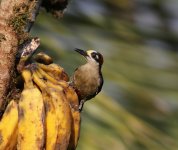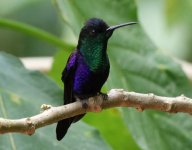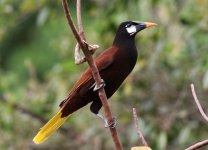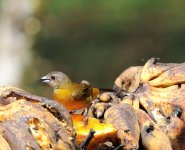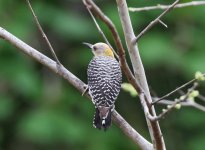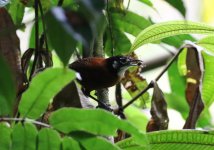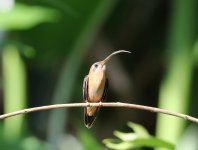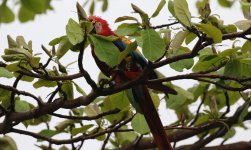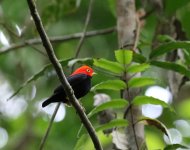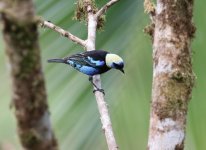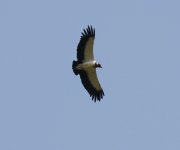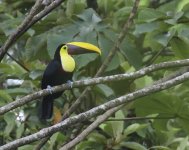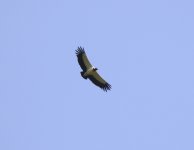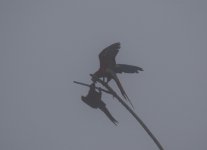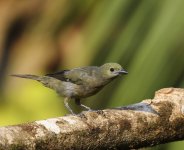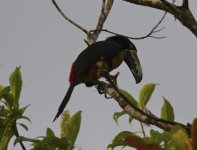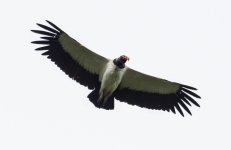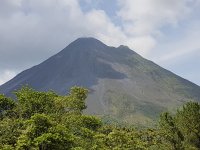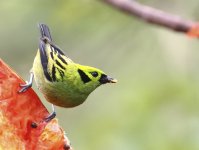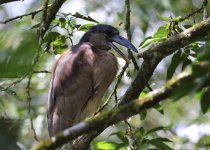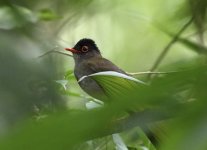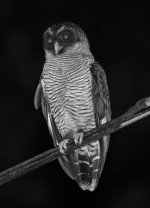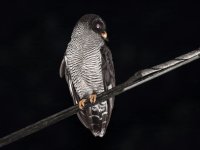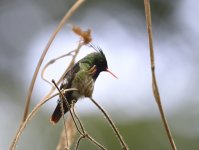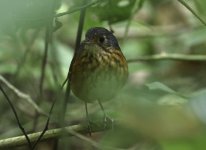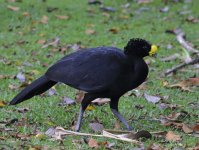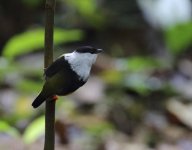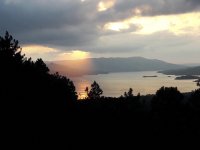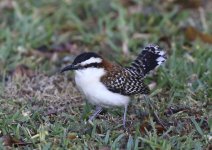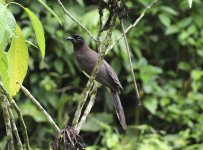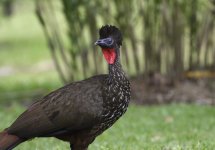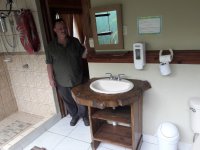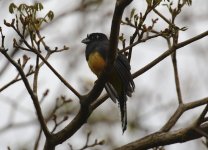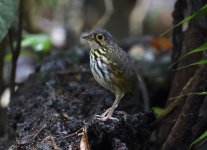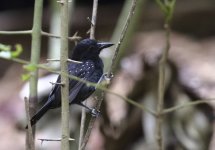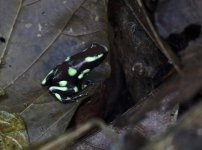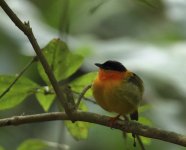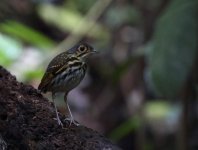We had previously visited Costa Rica as part of a general wildlife tour and although we saw plenty due to severe unseasonal weather we missed quite a bit including the Quetzal at Monteverde. So 17 years on and timed to co-incide with a big birthday we were back in Costa Rica staying at Savegre for the Quetzal and visiting mostly places we didn’t make last time. We didn’t do OSA, Nicoya or Tortuguera having spend some time there last time.
We started and finished in the Bougainvillea in Santa Domingo (only had lunch there first time), 3 nights in Maquenque Eco Lodge, 2 Nights at Arenal Observatory Lodge, 2 Nights at Cerro Lodge for Carara, 3 Nights in Gerado De Dota (Savegre Hotel), 3 Nights at Rancho Naturalista and 2 Nights at Tirimibina Reserve (also for La Selva). We took the new direct flights from Gatwick to San Jose a huge improvement on previous indirect flights we have taken to South and Central America.
We did look at cost of 4WD self-drive option but when I compared prices using a Local Driver / Guide and local company to book the accommodation it was not much more expensive than doing everything myself (it was actually cheaper than a self-drive option via a UK company) and took away some of the need to do loads of local preparation. We booked with Bella Aventura – I dealt with Veronika who is based in San Jose and speaks perfect English. We paid through Evaneos in UK pounds and had financial protection. They seem to offer this service for a few local companies in various countries.
We had the old Stiles and Skutch Guide but used Garrigues and Dean - The Birds of Costs Rica (second edition); (Danny our guide also had a few other books in the van for reference). Taxonomy we used was from AOCR 2018 The Official list of birds of Costa Rica.
On arrival at 16.00 we had to wait ages for our luggage, and then the traffic to Bougainvillea was really bad, despite our taxi driver trying loads of shortcuts, so it was after dark by the time we arrived. So no introductory bird walk in the garden. Instead we just had a brief walk in grounds after dinner. We heard a Mottled Owl but there was a US bird tour around the place so we weren’t sure if it was a bird or a speaker and it certainly didn’t respond to us calling, we also heard a Common Pauraque but couldn’t locate it, we found it next time we were here sitting on the tennis court. Also no sign of any frogs at the ponds.
Day 1 – San Domingo and Maquenque.
Up at first light for a walk of the hotel grounds. Our guide Danny Ugalde was picking us up at 09.00 so plenty of time for a birdwatch before and after breakfast. First birds we saw were Clay-coloured Thrushes which were pretty much everywhere, it was only at the end of the trip when they were in full song that you could understand why they are Costa Rican national bird. We soon added Rufous-naped Wren, Lesson’s Motmot, Hoffman’s Woodpecker, the ubiquitous Blue-Grey Tanager, Baltimore Oriole, Rufous-tailed Hummingbird, Inca Dove and Rufous-collared Sparrow. After breakfast we only added Chestnut-sided Warbler, Red-eyed Vireo and Swainson’s Thrush we couldn’t find the Ferruginous Pygmy Owl.
Danny arrived promptly at 9.00 and after a quick discussion about paying for access for potential hotspots (typically $5-10 per person), we agreed that we would for some, we set off for Maquenque.
The first of these stops was a garden on the edge of Braulio Carrillo, a transition area in terms of altitude and central / carribean species; the targets were Black-crested Coquette and Snowcap with an off-chance of Bare-necked Umbrellabird. We quickly found the Black-crested Coquette, he seemed to have a favoured perch, we had seen female Snowcap last visit but we quickly got a male albeit showing only briefly before, being chased off by Rufous-tailed Hummers. Other birds included Purple-crowned Fairy, Violet-headed Hummingbird, Crowned Woodnymph, Green Thorntail and Ruddy Pigeon. The father said his son was out on the trails looking for the Umbrellabird but hadn’t found it’s breeding area yet. So onto Maquenque with lunch and an ATM stop at Pital – we could probably have survived just on US dollars and then getting change in Colones but wanted to have some local currency for any small purchases.
The Maquenque Eco Lodge is a new 60hectare reserve located just north of Boca Tapada, San Carlos and offers easy access to the newly created Maquenque National Wildlife Refuge of 60.000 hectares in size. A local family created the lodge to maintain and conserve wildlife habitat, while providing visitors with high quality accommodations and service in a unique framework, creating an unforgettable rainforest experience or rainforest vacation in this privileged region, still off of the beaten path. The Lodge is located inside the Maquenque Eco Preserve in the Northern Territory of San Carlos, specifically in Boca Tapada. Surrounded by tropical rainforests, and bordering the Majestic San Carlos River, you have to take a small boat crossing to get to the lodge.
On the boat trip across we had Chestnut-headed and Montezuma’s Oropendula. It was pretty hot and humid in this lowland area bordering Nicaragua so we decided to wait by the feeders until 15.30 before setting off. The feeders had Passerini’s Tanager, Black-cheeked Woodpecker, Orange-chinned Parakeets, Green Honeycreeper and surprisingly for us Grey-headed Chacalaca.
The walk around the first trail and gardens gave us Wedge-billed Woodcreeper, Common Tody-flycatcher, Golden-hooded Tanager, Black-headed Saltator, Red-winged Blackbird, Black-cowled Oriole, Philadelphi Vireo, Squirrel Cuckoo, Collared Aracari, Amazon Kingfisher, and Yellow-billed Cacique.
It was a bit drizzly tonight – this place has rain year round despite it being the dry season but hopefully a little moisture will bring out the frogs. We did do a quick look for owls but nothing tonight.
Other wildlife included Agouti, White-nosed Coati and single Caiman.
We started and finished in the Bougainvillea in Santa Domingo (only had lunch there first time), 3 nights in Maquenque Eco Lodge, 2 Nights at Arenal Observatory Lodge, 2 Nights at Cerro Lodge for Carara, 3 Nights in Gerado De Dota (Savegre Hotel), 3 Nights at Rancho Naturalista and 2 Nights at Tirimibina Reserve (also for La Selva). We took the new direct flights from Gatwick to San Jose a huge improvement on previous indirect flights we have taken to South and Central America.
We did look at cost of 4WD self-drive option but when I compared prices using a Local Driver / Guide and local company to book the accommodation it was not much more expensive than doing everything myself (it was actually cheaper than a self-drive option via a UK company) and took away some of the need to do loads of local preparation. We booked with Bella Aventura – I dealt with Veronika who is based in San Jose and speaks perfect English. We paid through Evaneos in UK pounds and had financial protection. They seem to offer this service for a few local companies in various countries.
We had the old Stiles and Skutch Guide but used Garrigues and Dean - The Birds of Costs Rica (second edition); (Danny our guide also had a few other books in the van for reference). Taxonomy we used was from AOCR 2018 The Official list of birds of Costa Rica.
On arrival at 16.00 we had to wait ages for our luggage, and then the traffic to Bougainvillea was really bad, despite our taxi driver trying loads of shortcuts, so it was after dark by the time we arrived. So no introductory bird walk in the garden. Instead we just had a brief walk in grounds after dinner. We heard a Mottled Owl but there was a US bird tour around the place so we weren’t sure if it was a bird or a speaker and it certainly didn’t respond to us calling, we also heard a Common Pauraque but couldn’t locate it, we found it next time we were here sitting on the tennis court. Also no sign of any frogs at the ponds.
Day 1 – San Domingo and Maquenque.
Up at first light for a walk of the hotel grounds. Our guide Danny Ugalde was picking us up at 09.00 so plenty of time for a birdwatch before and after breakfast. First birds we saw were Clay-coloured Thrushes which were pretty much everywhere, it was only at the end of the trip when they were in full song that you could understand why they are Costa Rican national bird. We soon added Rufous-naped Wren, Lesson’s Motmot, Hoffman’s Woodpecker, the ubiquitous Blue-Grey Tanager, Baltimore Oriole, Rufous-tailed Hummingbird, Inca Dove and Rufous-collared Sparrow. After breakfast we only added Chestnut-sided Warbler, Red-eyed Vireo and Swainson’s Thrush we couldn’t find the Ferruginous Pygmy Owl.
Danny arrived promptly at 9.00 and after a quick discussion about paying for access for potential hotspots (typically $5-10 per person), we agreed that we would for some, we set off for Maquenque.
The first of these stops was a garden on the edge of Braulio Carrillo, a transition area in terms of altitude and central / carribean species; the targets were Black-crested Coquette and Snowcap with an off-chance of Bare-necked Umbrellabird. We quickly found the Black-crested Coquette, he seemed to have a favoured perch, we had seen female Snowcap last visit but we quickly got a male albeit showing only briefly before, being chased off by Rufous-tailed Hummers. Other birds included Purple-crowned Fairy, Violet-headed Hummingbird, Crowned Woodnymph, Green Thorntail and Ruddy Pigeon. The father said his son was out on the trails looking for the Umbrellabird but hadn’t found it’s breeding area yet. So onto Maquenque with lunch and an ATM stop at Pital – we could probably have survived just on US dollars and then getting change in Colones but wanted to have some local currency for any small purchases.
The Maquenque Eco Lodge is a new 60hectare reserve located just north of Boca Tapada, San Carlos and offers easy access to the newly created Maquenque National Wildlife Refuge of 60.000 hectares in size. A local family created the lodge to maintain and conserve wildlife habitat, while providing visitors with high quality accommodations and service in a unique framework, creating an unforgettable rainforest experience or rainforest vacation in this privileged region, still off of the beaten path. The Lodge is located inside the Maquenque Eco Preserve in the Northern Territory of San Carlos, specifically in Boca Tapada. Surrounded by tropical rainforests, and bordering the Majestic San Carlos River, you have to take a small boat crossing to get to the lodge.
On the boat trip across we had Chestnut-headed and Montezuma’s Oropendula. It was pretty hot and humid in this lowland area bordering Nicaragua so we decided to wait by the feeders until 15.30 before setting off. The feeders had Passerini’s Tanager, Black-cheeked Woodpecker, Orange-chinned Parakeets, Green Honeycreeper and surprisingly for us Grey-headed Chacalaca.
The walk around the first trail and gardens gave us Wedge-billed Woodcreeper, Common Tody-flycatcher, Golden-hooded Tanager, Black-headed Saltator, Red-winged Blackbird, Black-cowled Oriole, Philadelphi Vireo, Squirrel Cuckoo, Collared Aracari, Amazon Kingfisher, and Yellow-billed Cacique.
It was a bit drizzly tonight – this place has rain year round despite it being the dry season but hopefully a little moisture will bring out the frogs. We did do a quick look for owls but nothing tonight.
Other wildlife included Agouti, White-nosed Coati and single Caiman.




